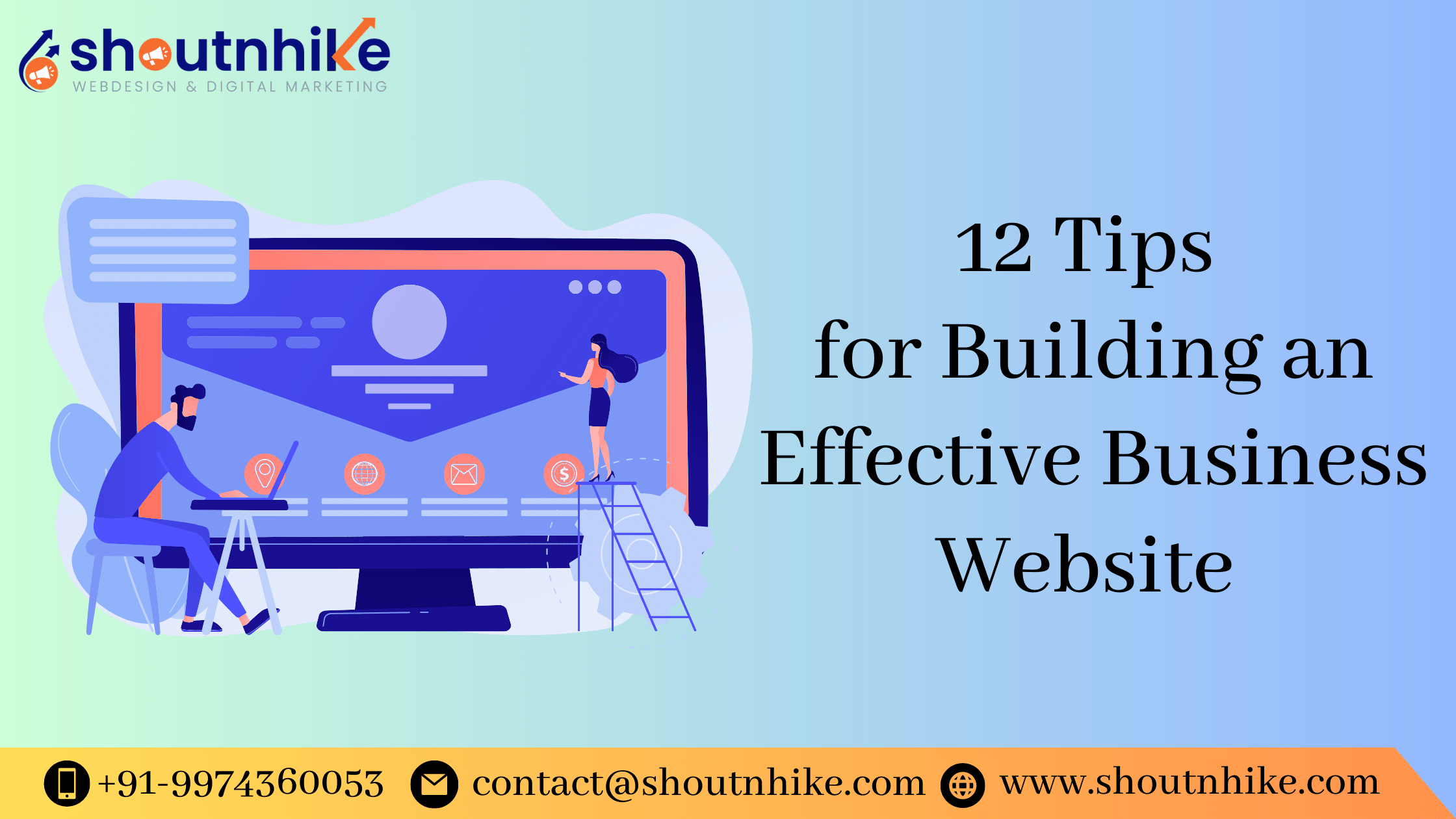12 Tips for Building an Effective Business Website

Having a successful business website is essential in today’s digital world. To gain an edge over the competition and reach your goals, you must have an effective website that looks professional, functions properly, and provides the right information to customers. But how exactly do you build a great website for your business? Many renowned SEO company in Ahmedabad can help optimize your website content to ensure the best possible search engine rankings. Here are 12 easy-to-follow tips to help you get started.
Importance of website speed optimization
Website speed optimization is one of the most crucial steps in developing an effective website. Here are a few reasons why it’s important:
1. Improved User Experience:
Website visitors expect fast loading times; if your site takes too long to load, they’ll leave. Speed optimization will ensure that your site loads quickly and efficiently, providing a seamless user experience.
2. Higher Rankings:
Search engine algorithms consider page speed when ranking websites in search engine results pages (SERPs). The faster your website loads, the higher it will rank, resulting in more organic traffic.
3. Increased Conversions:
Research has shown that slow loading times result in fewer conversions as users become frustrated. Optimizing your website’s speed will increase the likelihood of a visitor staying on your page and completing an action, such as making a purchase or subscribing to an email list.
12 Techniques of Website Speed Optimization
1. Utilize an efficient coding style:
Writing the most efficient code possible is essential to maintain website speed. Use concise and logical coding practices to obtain the best results while avoiding redundant or unnecessary elements.
2. Minify resources like HTML, CSS & JavaScript:
Reducing the size of resources like HTML, CSS, and JavaScript can help improve website performance. This can be done by eliminating whitespace, removing comments, using shorter variable names, and more.
3. Compress components with Gzip:
Gzip compression can reduce the size of webpages and other resources sent from a server to a browser by up to 70%. Not only does this improve page loading time, but it also reduces bandwidth costs for hosting providers.
4. Leverage browser caching:
Caching allows browsers to store certain files used on multiple web pages. This prevents the browser from re-downloading them each time a user visits a new page, improving website speed and performance.
5. Optimize images:
Images can be a major cause of slow loading times for websites. To address this issue, optimizing images by compressing them and using the correct file type (ex., JPEG or PNG) is important. Additionally, ensure images are no larger than necessary and use CSS sprites if possible.
6. Reduce redirects:
Redirects can create additional HTTP requests and response cycles, slowing down website speed dramatically. Wherever possible, avoid redirects or use server-side scripting to reduce the number of HTTP requests.
7. Minimize HTTP requests:
Every time a browser has to make an HTTP request, it will add extra time to page loading speeds. To minimize this, try and combine files as much as possible, link only to needed resources, and ensure all scripts are placed at the bottom of web pages.
8. Use a content delivery network (CDN):
A CDN is a network of servers worldwide that can serve up website content from closer locations than your main server. This reduces latency and improves overall website performance for users in different countries or regions worldwide.
9. Implement lazy load images:
Lazy loading images means only loading them when they enter the viewport. This prevents browsers from downloading all images simultaneously and can significantly reduce page load times.
10. Capitalize on browser pre-fetching:
Pre-fetching is a feature of modern web browsers that allows them to anticipate what content or resources users may need next and start downloading it in advance. By taking advantage of this, website speed can be improved as pages will already have some resources before they are needed.
11. Enable keep-alive connections:
Keep-alive connections allow browsers to reuse existing TCP/IP connections multiple times instead of requiring a new connection for each requested resource. This reduces latency and improves overall website performance.
12. Remove unused plugins and themes:
Too many plugins and themes can slow down a website significantly. To improve speed, make sure to delete any unnecessary plugins or themes which are not being used on the website. Additionally, regularly check for updates as older versions may contain bugs that can lead to poor performance.
These are just some techniques that can be used to optimize website speed and performance. However, it’s important to note that all websites perform differently, so it’s best to measure and monitor before making any changes. With the right testing tools, businesses can get the most out of their online presence while providing end users an optimal experience.
Tags: Website design











